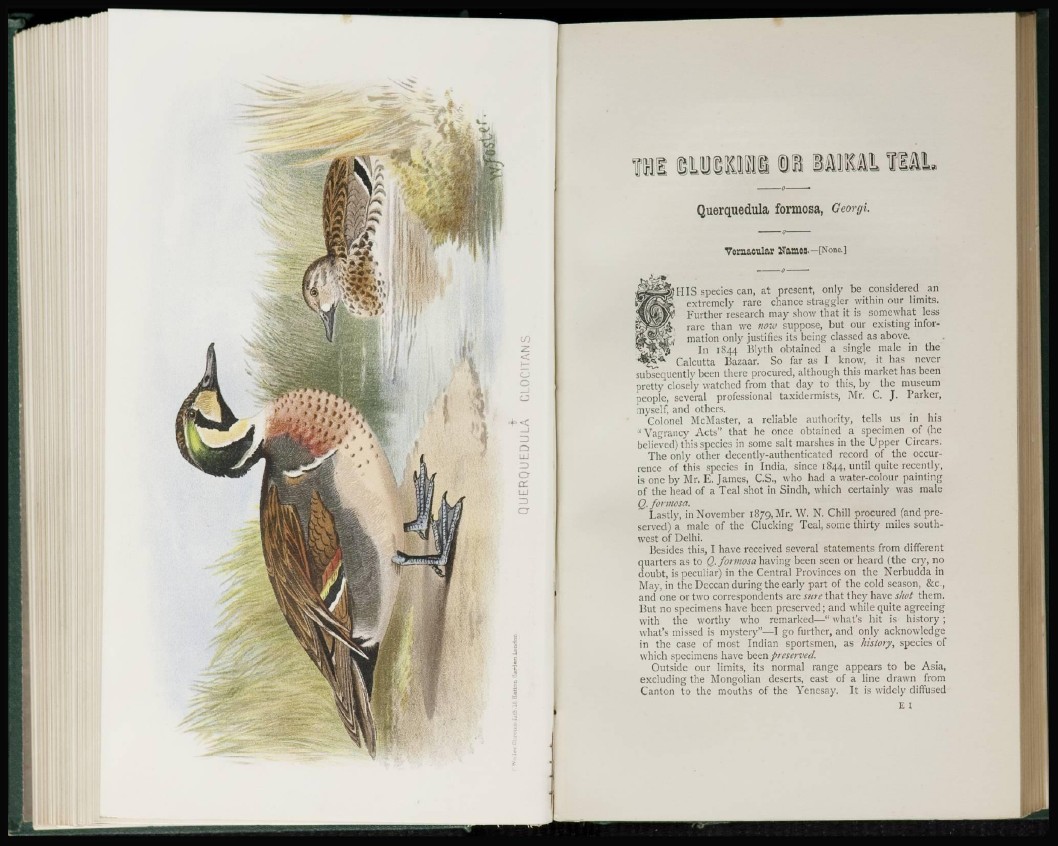
t i l iiOllilli I I IMRAl 1 liL
Querquedula formosa, Georgi.
Vernacular Namos.—[None.]
[IIS species can, at present, only be considered an
i(J^r\?- extremely rare chance straggler within our limits.
^V^W.y¡, Further research may show that it is somewhat less
ts&gj§& rare than we now suppose, but our existing infor-
¡§£3X28^ mation only justifies its being classed as above.
^S=r^S In 1S44 Blyth obtained a single male in the
" ^ j " 0 , Calcutta Bazaar. So far as I know, it has never
subsequently been there procured, although this market has been
pretty closely watched from that day to this, by the museum
people, several professional taxidermists, Mr. C. J. Parker,
myself and others.
Colonel McMaster, a reliable authority, tells us in his
" Vagrancy Acts" that he once obtained a specimen of (he
believed) this species in some salt marshes in the Upper Circars.
The only other decently-authenticated record of the occurrence
of this species in India, since 1844, until quite recently,
is one by Mr. E. James, C.S., who had a water-colour painting
of the head of a Teal shot in Sindh, which certainly was male
Q. formosa.
Lastly, in November 1879, Mr. W. N. Chill procured (and preserved)
a male of the Clucking Teal, some thirty miles southwest
of Delhi.
Besides this, I have received several statements from different
quarters as to Q. formosa having been seen or heard (the cry, no
doubt, is peculiar) in the Central Provinces on the Nerbudda in
May, in the Dcccan during the early part of the cold season, &c,
and one or two correspondents are sine that they have sliot them.
But no specimens have been preserved; and while quite agreeing
with the worthy who remarked—" what's hit is history ;
what's missed is mystery"—I go further, and only acknowledge
in the case of most Indian sportsmen, as history, species of
which specimens have been preserved.
Outside our limits, its normal range appears to be Asia,
excluding the Mongolian deserts, east of a line drawn from
Canton to the mouths of the Ycncsay. It is widely diffused
E I